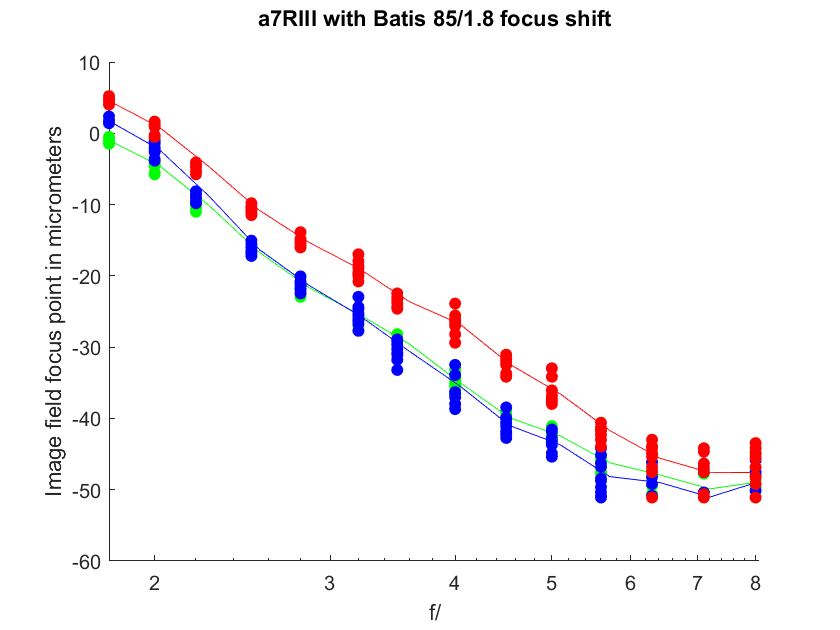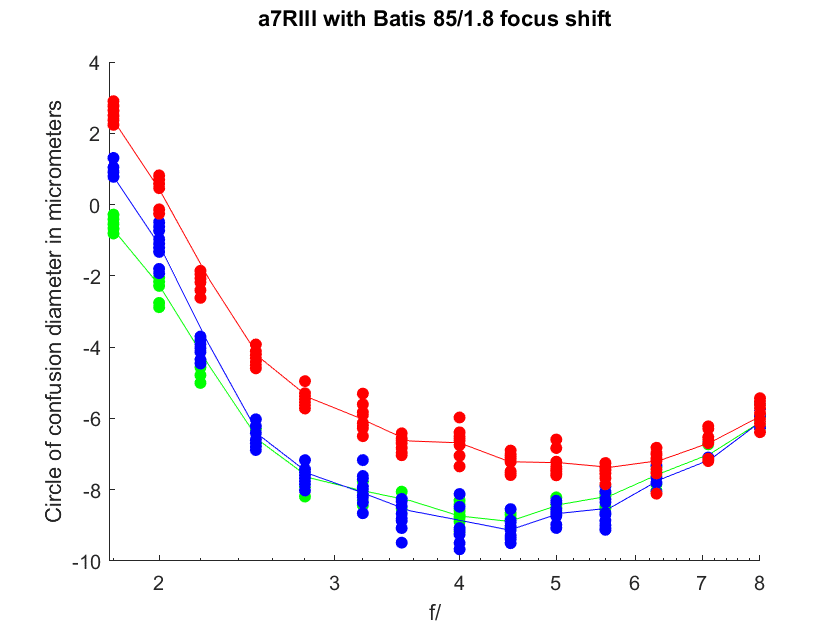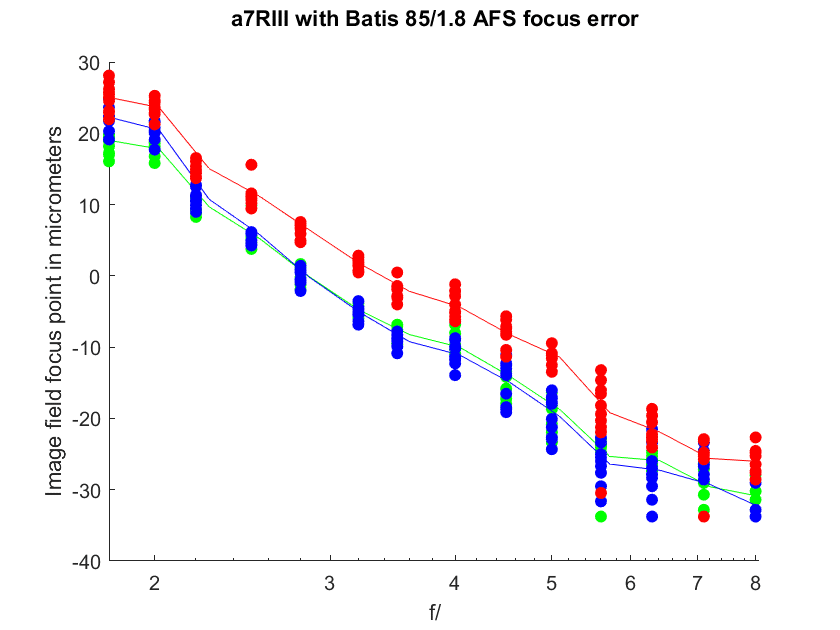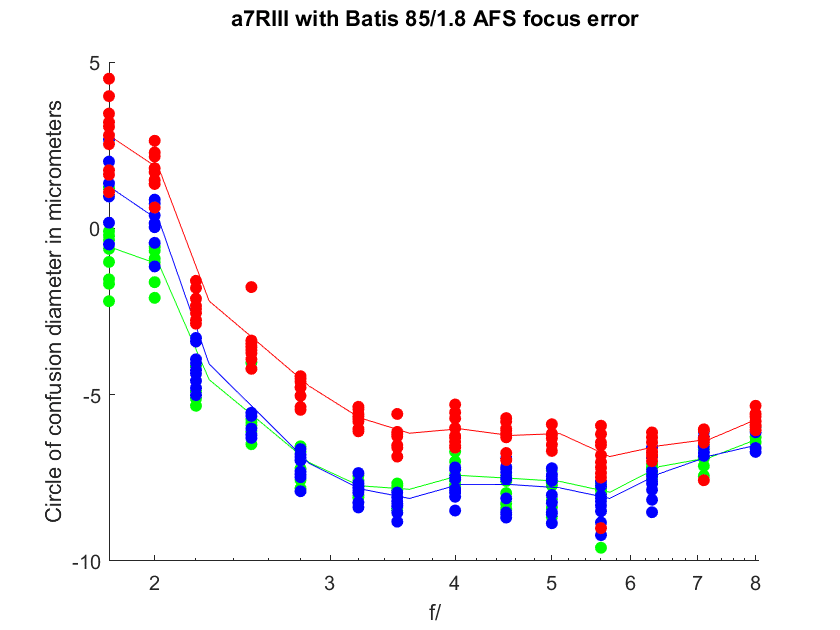This is a continuation of a series of posts on the Sony a7RIII. You should be able to find all the posts about that camera in the Category List on the right sidebar, below the Articles widget. There’s a drop-down menu there that you can use to get to all the posts in this series; just look for “a7RIII”.
In the previous two posts, I found systematic autofocus errors with Sony lenses (the 100-400, 70-200/4, and 90/2.8 macro) on the a7RIII, using AF-S. I checked the focus shift using manual focusing, and it seemed to mirror the AF-S errors, indicating to me that the combination of PDAF and CDAF that the a7RIII uses is not compensating properly for focus shift.
I’m now going to do the same test with the Zeiss Batis 85/1.8.
First with manual focusing:
Negative numbers indicate front-focusing. The image-plane shift in micrometers (um) increases fairly consistently.
Let’s look at the effect of those errors on the circle of confusion (CoC):
The largest effect is about two pixels.
Now I’ll turn on autofocus (spot, medium, AF-S, Setting Effect on):
I’ve got two things to say. First, autofocus is remarkably consistent. Second, it’s not correcting for focus shift.
What gives?




Jim do you have any sense of how much of the differences between how much the Sony lenses deal with focus shift is to do with the extent to which they are focussing stopped down?
There was massive forum complaining about the tendency to always stop down for focus (actually studio guys trying to focus at f8 with strobes and weak modelling lights might have had reason) and in recent firmware updates this behaviour has changed on some lenses.
There’s also a difference in behaviour with some lenses, I’m told, as to whether “settings effect” is turned on or off. I think that for some lenses they now focus at about one stop down: maybe that’s thought of as a good enough compromise so as to not require LUTs?
I did have setting effect on. I thought that was supposed to make the lens focus stopped down.
My understanding is (which may be wrong) is that this varies with firmware and lens and camera.
I am sure that on one of the firmware iterations on the r2 (which I don’t have since switching to R3) settings effect on resulted in the 1.8/55 focussing at about f2.5-2.8 when the lens was set to apertures 2.8 or smaller (I could see it stopped down for settings effect, opening up for focus, then stopping down again for taking)
What does the a7RII do, does it correct or behave the same?
Good question. I don’t know — yet.
I just received my copy of the new Sony 24-105mm f/4 FE and it exhibits significant focus shift at the long end. Apparently it’s copy specific because other users are not seeing the same issue. My A7rII is definitely not correcting for it in AF-S mode – it focuses this particular lens wide-open, thus the plane of focus is shifted when stopped down. So it seems clear Sony’s AF system is not correcting for shift. Either Sony is doing its CDAF “confirmation cycle” before stopping the lens down (thus not incorporating the shift correction), or the camera is not actually doing a CDAF cycle at all. I’ve seen hints about this correction cycle online but haven’t found any definitive evidence that the camera actually performs it.
Switching to AF-C mode on my A7rII produces correct focus since the camera focuses stopped-down for that mode.
I posted about my findings with the 24-105 in the following posts on Fred Miranda (snapsy):
http://www.fredmiranda.com/forum/topic/1517297/25#14331645
http://www.fredmiranda.com/forum/topic/1517297/26#14331696
http://www.fredmiranda.com/forum/topic/1517297/27#14332296